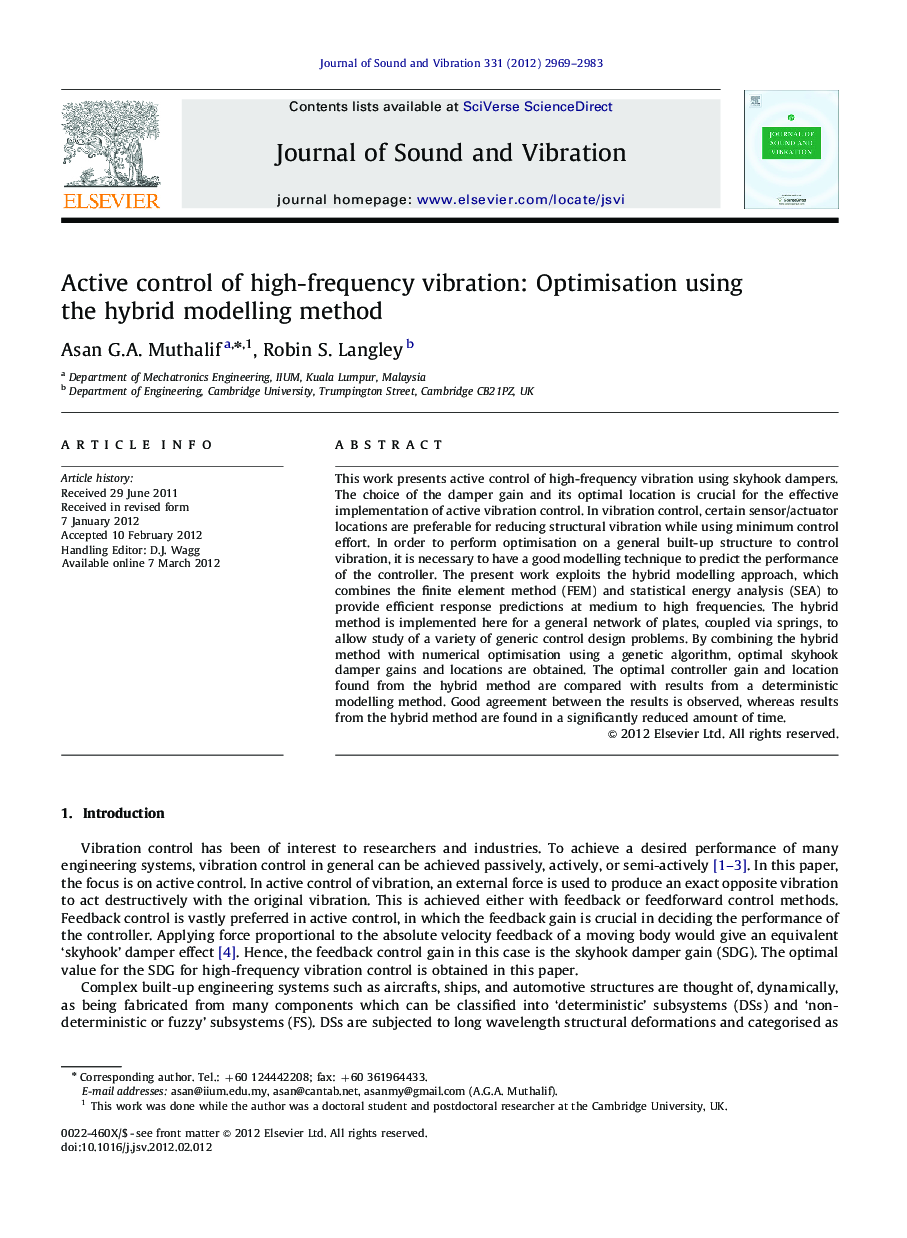| Article ID | Journal | Published Year | Pages | File Type |
|---|---|---|---|---|
| 289045 | Journal of Sound and Vibration | 2012 | 15 Pages |
This work presents active control of high-frequency vibration using skyhook dampers. The choice of the damper gain and its optimal location is crucial for the effective implementation of active vibration control. In vibration control, certain sensor/actuator locations are preferable for reducing structural vibration while using minimum control effort. In order to perform optimisation on a general built-up structure to control vibration, it is necessary to have a good modelling technique to predict the performance of the controller. The present work exploits the hybrid modelling approach, which combines the finite element method (FEM) and statistical energy analysis (SEA) to provide efficient response predictions at medium to high frequencies. The hybrid method is implemented here for a general network of plates, coupled via springs, to allow study of a variety of generic control design problems. By combining the hybrid method with numerical optimisation using a genetic algorithm, optimal skyhook damper gains and locations are obtained. The optimal controller gain and location found from the hybrid method are compared with results from a deterministic modelling method. Good agreement between the results is observed, whereas results from the hybrid method are found in a significantly reduced amount of time.
► Vibration control on built-up structures with high modal overlap is demonstrated. ► The hybrid modelling method is advocated and used for optimisation. ► Optimal damping for high frequency vibration control is derived analytically. ► Increase in modal overlap when using the optimal skyhook is derived as 1/(2π). ► Energy reduction with optimal skyhook as a function of frequency is given.
